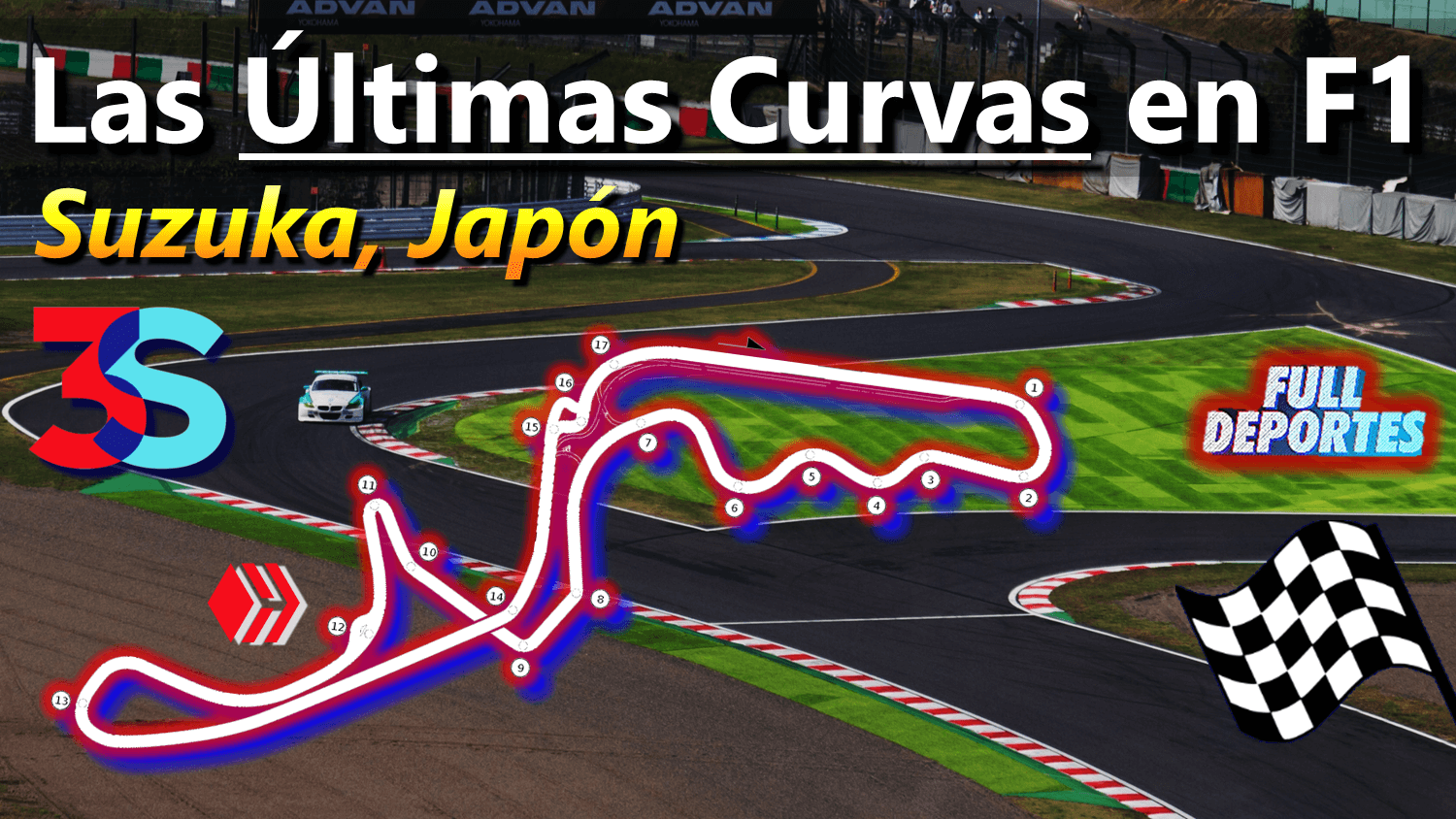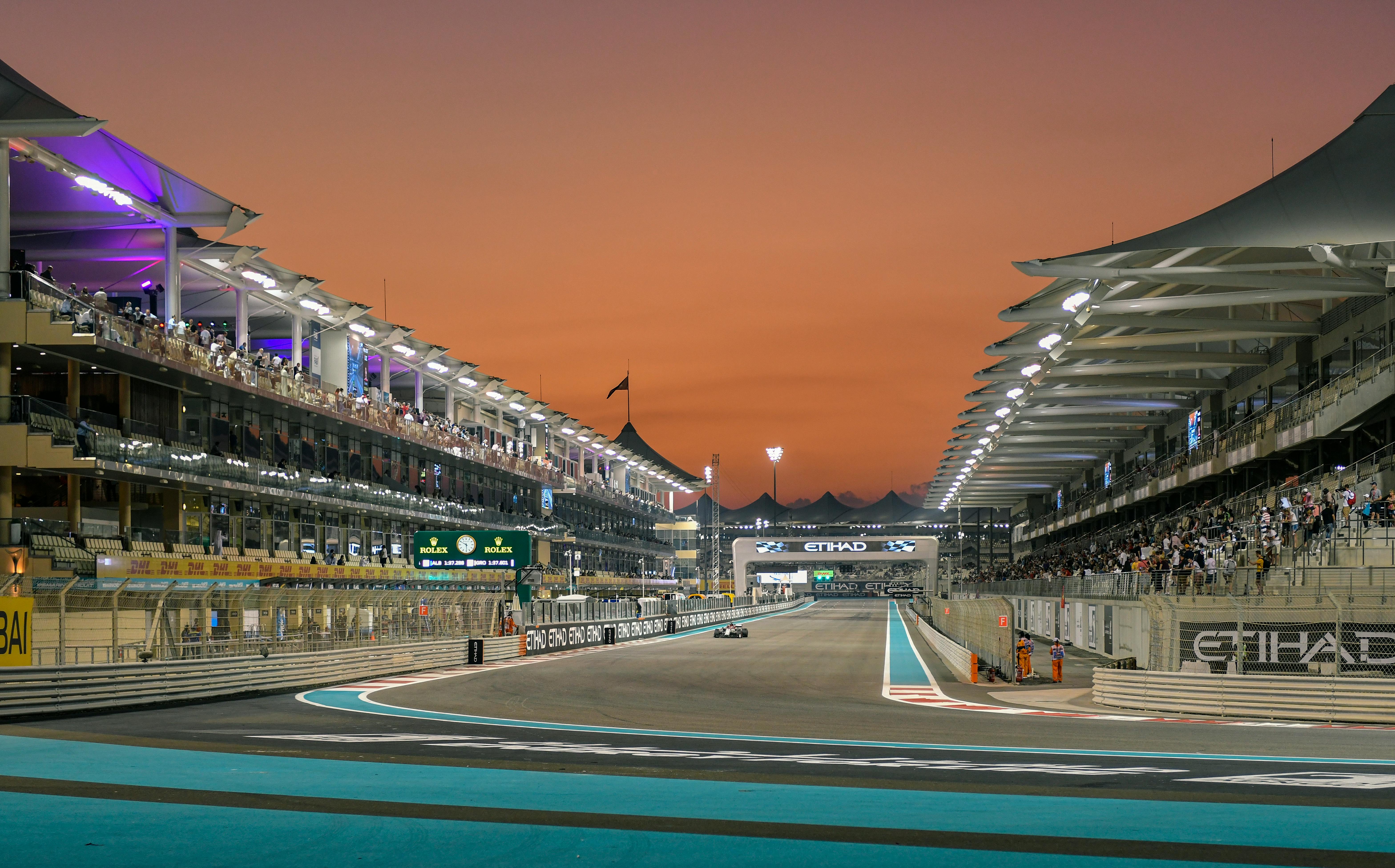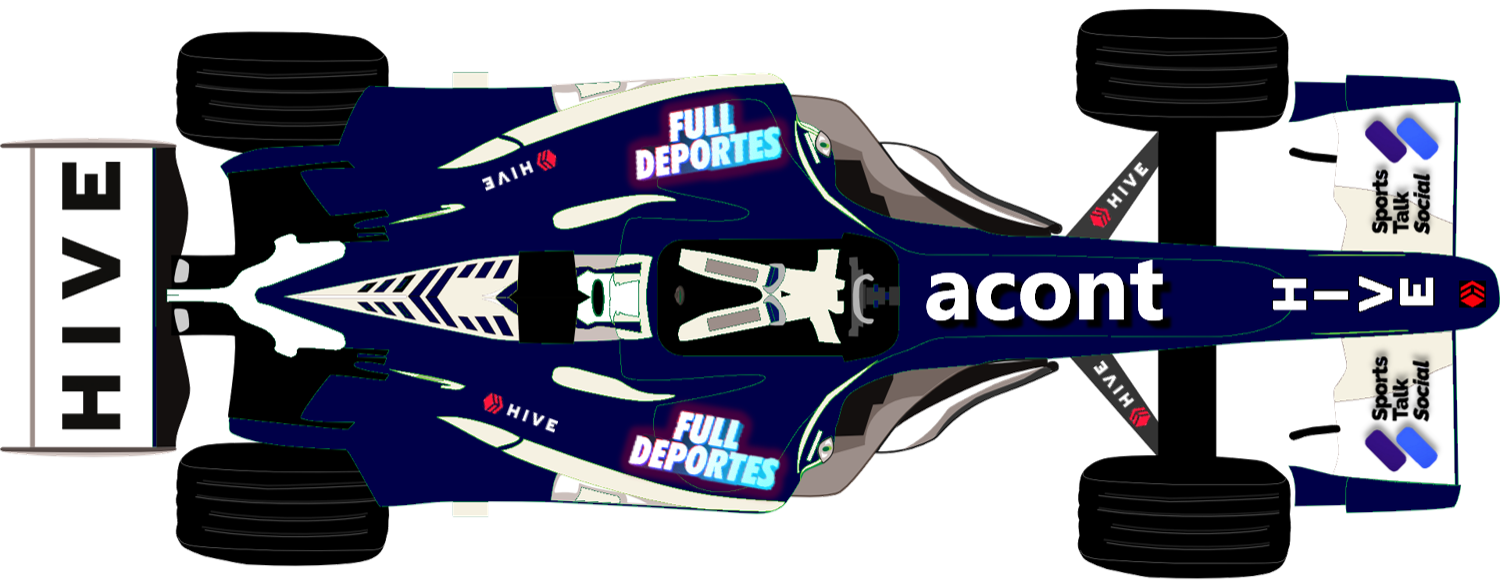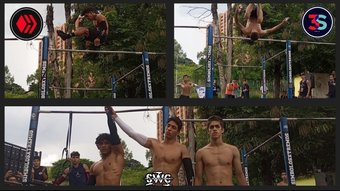🛣️Las Últimas Curvas en la Fórmula 1 ¿Nos deben espectáculo? 🏁 La mítica chicane de Suzuka 🇯🇵
18
About :
A lo largo de este blog dedicado a la Fórmula 1, hemos ido analizando diversos trazados en su totalidad, destacando así algunas de sus particularidades y detalles técnicos. Analizar los circuitos y autódromos de la máxima categoría me ha llevado a reflexionar acerca de un punto en particular: ¿Qué hay de aquellas últimas curvas de cada pista? ¿Porqué no suelen destacar?

Las míticas últimas curvas de Suzuka
Y es aquí que, previo al Gran Premio de Japón, en el mítico autódromo de Suzuka, nos toparemos con una última serie de curvas las cuales fueron escenario de acontecimientos clave en la historia de la Fórmula 1, tal como aquel choque y abandono de Ayrton Senna y Alain Prost en el Gran Premio de Japón de 1989. Aunque Senna intentara volver a la carrera, en la cual finalmente remontó posiciones y ganó, posteriormente fue descalificado generando así una tremenda polémica deportiva en el paddock de la Fórmula 1. Este incidente fue clave en la definición de ese campeonato, que finalmente se llevaría Prost. Ambos eran compañeros de equipo en McLaren-Honda.
Esta última curva de Suzuka, la cual es una chicane algo estrecha y lenta, no solo tiene cierta relevancia histórica, sino que es un punto clave de sobrepasos en esta pista. Los autos llegan a altas velocidades luego de una zona de aceleración bastante larga de más de 1 Kilómetro, para frenar a fondo aquí, por lo que los pilotos tienen oportunidades de ejecutar maniobras de sobrepaso en esta chicane. Además, previo a esta chicane, tenemos una espectacular curva que se traza a fondo, llamada 130R por su radio de giro. Es la curva N°15, y también se pueden llegar a ver allí adelantamientos muy espectaculares, como el de Fernando Alonso a Michael Schumacher en el año 2005.

Queda claro acá que Suzuka posee unas últimas curvas prácticamente de leyenda. Y es que no solo estas curvas son importantes y espectaculares sino que todo el trazado en sí es mítico, espectacular y rápido. Sin embargo, no podría decirse lo mismo de las últimas curvas de otras pistas del calendario.
¿Y el resto de los circuitos?
Cuando hablamos de curvas memorables, solemos pensar en Eau Rouge, la Curva Parabólica (ahora llamada Curva Alboreto), Maggots y Becketts, e incluso para irnos a pistas más modernas, podríamos mencionar a la curva 8 de Estambul o la primera curva de Austin. Pero ¿Qué hay de las últimas curvas?
La primera curva suele ser la más memorable o fácil de recordar, y también suele ser un punto clave de sobrepasos ya que viene luego de la recta principal la cual suele ser larga. Por otro lado, sucede que en muchos circuitos y autódromos la última curva no suele tener relevancia a la hora de ver adelantamientos o ser tan significativa a nivel general. Si bien los pilotos siempre tratan de aprovechar cada centímetro de pista, suele suceder que la última curva no marca una gran diferencia en una Pole Position o ya sabemos que en carrera no veremos adelantamientos allí sino que debemos esperar hasta más adelante en el circuito.
Son pocas esas últimas curvas que han dejado en el público impresiones memorables. Ejemplos, la última curva de Suzuka, como ya mencionamos, o incluso la Parabólica de Monza. Podríamos incluir también al muro de los campeones en Montreal o la parada del autobús en Spa. Sin emabrgo, en la mayoría de los trazados la última curva no es tan relevante.

Lo vemos incluso en las sesiones de clasificación o Pole Position. A veces los pilotos parecen no preocuparse mucho por trazar la última curva a la mayor velocidad posible antes de iniciar su vuelta rápida. Aquellas últimas curvas que menos destacan podrían ser, desde mi perspectiva, las de pistas como: Melbourne, Barcelona, Nürburgring, Imola, Mónaco, Losail, Paul Ricard, Austin, Sochi, Shanghai, o Yas Marina. Este último circuito, Yas Marina, posee una de las últimas curvas que personalmente encuentro menos atractivas o relevantes.
Otras pistas poseen últimas curvas significativamente más relevantes, ya que permiten mayor cantidad de adelantamientos, pero no dejan de ser curvas no tan llamativas en la vuelta general del circuito. Estas, bajo mi criterio, podrían ser las últimas curvas de: Sakhir, Baku, Sepang, Interlagos, y quizás una de las más espectaculares o polémicas: la del nuevo circuito urbano de Jeddah.
Esto nos lleva a preguntarnos: ¿Nos deben espectáculo las últimas curvas?. Creo que cada curva de una pista de carreras es muy importante. Algunas son más memorables o espectaculares que otras. Pero, quizás en el futuro, los diseños de los trazados de Fórmula 1 deberían contemplar el hecho de que todas y cada una de las curvas cumplan el propósito de dar el mayor espectáculo posible, y no ser un giro más, ya sea por motivos de espacio o factores externos al deporte.
Gracias por visitar mi canal dedicado al mundo del deporte a motor y especialmente a la Fórmula 1. No te pierdes este video en #3Speak ¡Hasta la próxima! 🏁

Throughout this blog dedicated to Formula 1 we have been analyzing several tracks in their entirety, highlighting some of their peculiarities and technical details. Analyzing the circuits and racetracks of the top category has led me to reflect on one point in particular: What about those last corners of each track? Why don't they usually stand out??
The mythical last corners of Suzuka
And it is here that, prior to the Japanese Grand Prix, at the mythical Suzuka racetrack, we will come across a final series of corners which were the scene of key events in the history of Formula 1, such as the crash and retirement of Ayrton Senna and Alain Prost in the Japanese Grand Prix of 1989. Although Senna tried to return to the race, in which he finally recovered positions and won, he was later disqualified, thus generating a tremendous sporting controversy in the Formula 1 paddock. This incident was key in the definition of that championship, which Prost would finally win. Both were teammates at McLaren-Honda.
This last corner of Suzuka, which is a somewhat narrow and slow chicane, not only has some historical relevance, but is also a key overtaking point at this track. The cars arrive at high speeds after a fairly long acceleration zone of more than 1 kilometer, to brake hard here, so drivers have opportunities to execute overtaking maneuvers in this chicane. In addition, prior to this chicane, we have a spectacular curve that is drawn flat out, called 130R because of its turning radius. It is turn 15, and there you can also see very spectacular overtaking maneuvers, such as Fernando Alonso's overtaking of Michael Schumacher in 2005.
It is clear here that Suzuka has some legendary final corners. Not only are these corners important and spectacular, but the whole track itself is mythical, spectacular and fast. However, the same could not be said of the last corners of other tracks on the calendar.
What about the rest of the circuits?
When we talk about memorable corners, we usually think of Eau Rouge, the Parabolic Curve (now called Alboreto Curve), Maggots and Becketts, and even to go to more modern tracks, we could mention Istanbul's turn 8 or Austin's first corner. But **What about the last corners?
The first corner is usually the most memorable or easy to remember, and it is also usually a key point for overtaking as it comes after the main straight which is usually long. On the other hand, it happens that in many circuits and racetracks the last corner is not usually relevant when it comes to overtaking or being so significant at a general level. Although drivers always try to take advantage of every centimeter of track, it usually happens that the last corner does not make a big difference in a Pole Position or we already know that in the race we will not see overtaking there but we must wait until later in the circuit.
There are few of those last corners that have left memorable impressions on the public. Examples, the last corner of Suzuka, as already mentioned, or even the Parabolica of Monza. We could also include the wall of champions in Montreal or the bus stop in Spa. However, in most of the tracks the last corner is not so relevant.
We see it even in qualifying or Pole Position sessions. Sometimes drivers don't seem to care too much about the last corner at the highest possible speed before starting their fast lap. Those last corners that stand out the least could be, from my perspective, those of tracks like: Melbourne, Barcelona, Nürburgring, Imola, Monaco, Losail, Paul Ricard, Austin, Sochi, Shanghai, or Yas Marina. This last circuit, Yas Marina, has one of the last corners that I personally find less attractive or relevant.
Other tracks have significantly more relevant last corners, as they allow more overtaking, but they are still not so striking in the overall lap of the circuit. These, under my criteria, could be the last corners of: Sakhir, Baku, Sepang, Interlagos, and perhaps one of the most spectacular or controversial: that of the new Jeddah street circuit.
This begs the question: Do we are owed spectacle by the final corners?. I believe that every corner of a race track is very important. Some are more memorable or spectacular than others. But, perhaps in the future, Formula 1 track designs should contemplate the fact that each and every corner should serve the purpose of providing as much spectacle as possible, and not be just another turn, either for reasons of space or factors external to the sport.
Thank you for visiting my channel dedicated to the world of motorsport and especially Formula 1. Don't miss this video on #3Speak See you next time! 🏁
Translated to English language with the help of DeepL.com
FuentesSources
Música: Time for Machine (Gvidon) - Pixabay
Ayrton Senna and Alain Prost's Championship Deciding Crash | 1989 Japanese Grand Prix
Greatest Saves And Overtakes at Suzuka's 130R | Japanese Grand Prix
2019 Chinese Grand Prix: Valtteri Bottas' Pole Lap | Pirelli
Charles Leclerc Sets Fastest Lap EVER in Melbourne | 2022 Australian Grand Prix
Verstappen Wins Title With Final Lap Overtake! | 2021 Abu Dhabi Grand Prix
 |
 |
Otras redes sociales:
 |
 |
 |
 |
| ¡Gracias por visitar! — Deja tu comentario 🚥🏆  |
Tags :
Their limit for today is $0!





























Comments:
Reply:
To comment on this video please connect a HIVE account to your profile: Connect HIVE Account